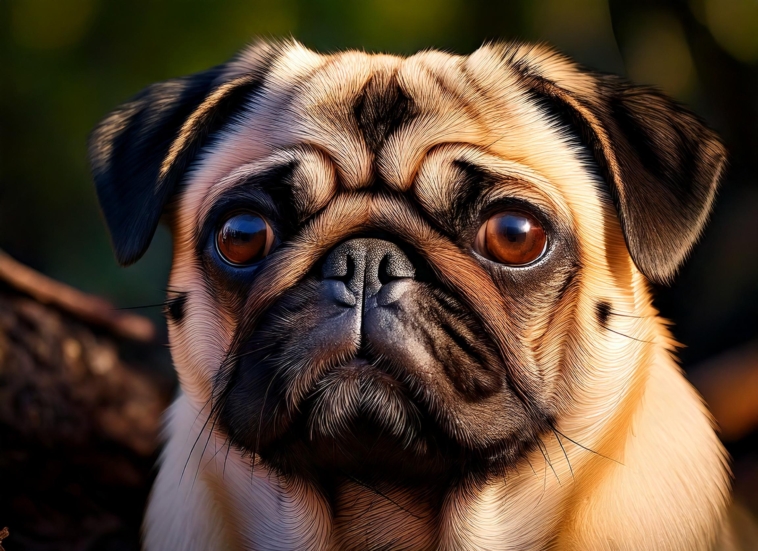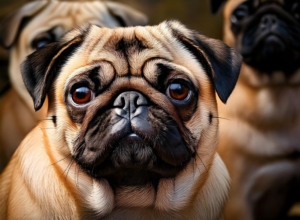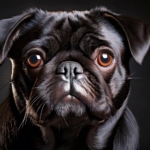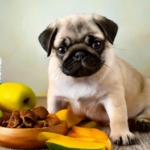Meet the Fawn Pug: The Toasted Marshmallow of the Dog World
Of all the pug breeds, the fawn pug is the most distinguished-looking like a nicely buttered biscuit—small, endearing, and ridiculously self-important. Dog owners don’t merely appreciate them—they treat them like royalty in loaf-dog shape. With their sturdy physique, piercing glares, and regal snorting, they’ve secured their place on every sofa they grace.
Temperament: The Clingiest Roommate You’ll Ever Love
- Friendly: Loves people more than people love people.
- Loving: Will glue themselves to your lap for hours.
- Sociable: Thrives on attention and dramatically sulks when ignored.
Lifespan: 12 to 15 years of joyful snorts, loyal companionship, and occasional stubborn meltdowns.
Ideal Living Space: Apartments, condos, hobbit holes—anywhere with a couch and a treat jar.
A Regal History: How the Fawn Pug Took Over the World (and Our Hearts)
These soft-faced nobles originated in Ancient China, where emperors preferred them to many of their counselors. They showed up in royal courts, paintings, and likely palace rumor.
- 16th Century: European merchants “discovered” pugs and more or less smuggled them into nobility.
- 17th Century: The House of Orange adopted them as their mascot.
- 19th Century: Queen Victoria went totally fangirl, spreading their popularity throughout Britain.
They’ve always had a desire for royalty—and for roasted chicken.
How to Spot a Fawn Pug (Hint: It’s the Chunky One With the Side-Eye)
- Body: Stocky, hairy bowling ball shape. Short legs, wide chest, powerful wiggle.
- Coat: Double coat—soft undercoat, more resilient outer coat. Color is creamy beige to rich tan.
- Face: Timeless wrinkles, deep-set eyes, and an expression of permanent concern.
- Size: 10 to 13 inches tall. Weighs 14 to 18 pounds of love and judgment.
Pugsonality: Drama Kings and Queens in a Fun-Sized Package
- Affectionate: Will follow you around like they’re on security detail.
- Stubborn: Understands what “sit” is. Acts like they don’t.
- Loyal: Will guard your reputation against squirrels and doorbells.
- Sociable: Along with children, cats, and anyone who has snacks.
Grooming: Spa Days Are Mandatory (Or Else You’ll Regret It)
Caring for a fawn pug means embracing the fluff. And the snorts. And the occasional funky smell.
- Brushing: Twice a week or you’ll be wearing their coat yourself.
- Bathing: Once a month unless they find a mud puddle first.
- Nails: Trim every few weeks to prevent the midnight tap dance.
- Wrinkles: Wipe them daily. They’re cute but bacteria think they’re a buffet.
- Teeth: Daily brushing or you’ll need a hazmat suit for pug breath.
Health: Small Dog, Big Drama
Fawn pugs are spiritually healthy but they have a few quirks built right in.
- Breathing Complications: Their faces are cute but not particularly aerodynamic.
- Eye Trauma: Their eyes protrude more than your typical cartoon character.
- Skin Problems: Those wrinkles have to be kept clean or it gets rancid in a hurry.
- Weight Gain: They’ve got a slow metabolism. Their hunger ain’t.
Feeding: The Art of Saying ‘No’ to Puppy Eyes
Pugs are expert beggars. Don’t be fooled. Their health is a matter of discipline.
- Healthy fats: Omega 3 and 6 make their coat shine.
- Portion control: They will eat until they get rounder than they currently are.
- Hydration: Fresh water is always available. Not beer. Not juice. Water.
Training: Yes, It’s Possible (With Bribery)
Pug training is akin to negotiating with a toddler in a suit.
- Begin early: Catch the obstinacy before it becomes a habit.
- Brief sessions: They have the goldfish-on-espresso attention span.
- Positive reinforcement: Yelling doesn’t work. Snacks do.
- Consistency: Routine is important. Confuse them once, and they’ll milk it for years.
Aging: From Spunky Sprinter to Lazy Lapdog
They mature like good cheese—smellier, but not less endearing.
- Adult phase (1–7 years): Maximum zoomies and choosy hearing.
- Old age phase (7+): They’ll slow down but won’t stop loving you.
Be aware of creaky knees, tooth troubles, and the occasional attitude adjustment.
Common Misconceptions (and What’s Actually True)
- “They’re small forever.” Not. Healthy fawn pugs are sturdy.
- “They don’t require walks.” Unless you want a chubby bored pug, they do.
- “They’re low maintenance.” Grooming is necessary—winkle care is real.
- “They cannot learn tricks.” Oh, they can. They just like to pretend otherwise.
Thinking of Adopting? Here’s What You Need to Know
Bringing home a fawn pug is like adopting a snorty, furry toddler.
- Health Checks: Choose reputable breeders or rescues with solid records.
- Puppy-Proofing: Hide your shoes, your snacks, and your remote.
- Routine: Feed them well, train them early, love them constantly.
- Companionship: They’re not fans of solitude. You’ve got a shadow now.
Why Fawn Pugs Are the Best (And You’ll Never Convince Them Otherwise)
They can be wee, crumpled, and a little histrionic—but fawn pugs are unlike any other breed.
Looks: An impeccable blend of cuteness and craziness, finished off with a furry face full of wrinkles.
Personality: One part faithful best friend, one part pompous starlet.
Heart: Huge. And generally pounding louder when food has been smelled.
Final Thought: Life with a fawn pug isn’t just pet ownership—it’s a full-time comedy show, emotional support session, and snuggle marathon all rolled into one. You’ll laugh, you’ll sigh, and occasionally you’ll wonder if you’ve adopted a tiny, judgmental old man in a dog suit. But you’ll never, ever be bored.





